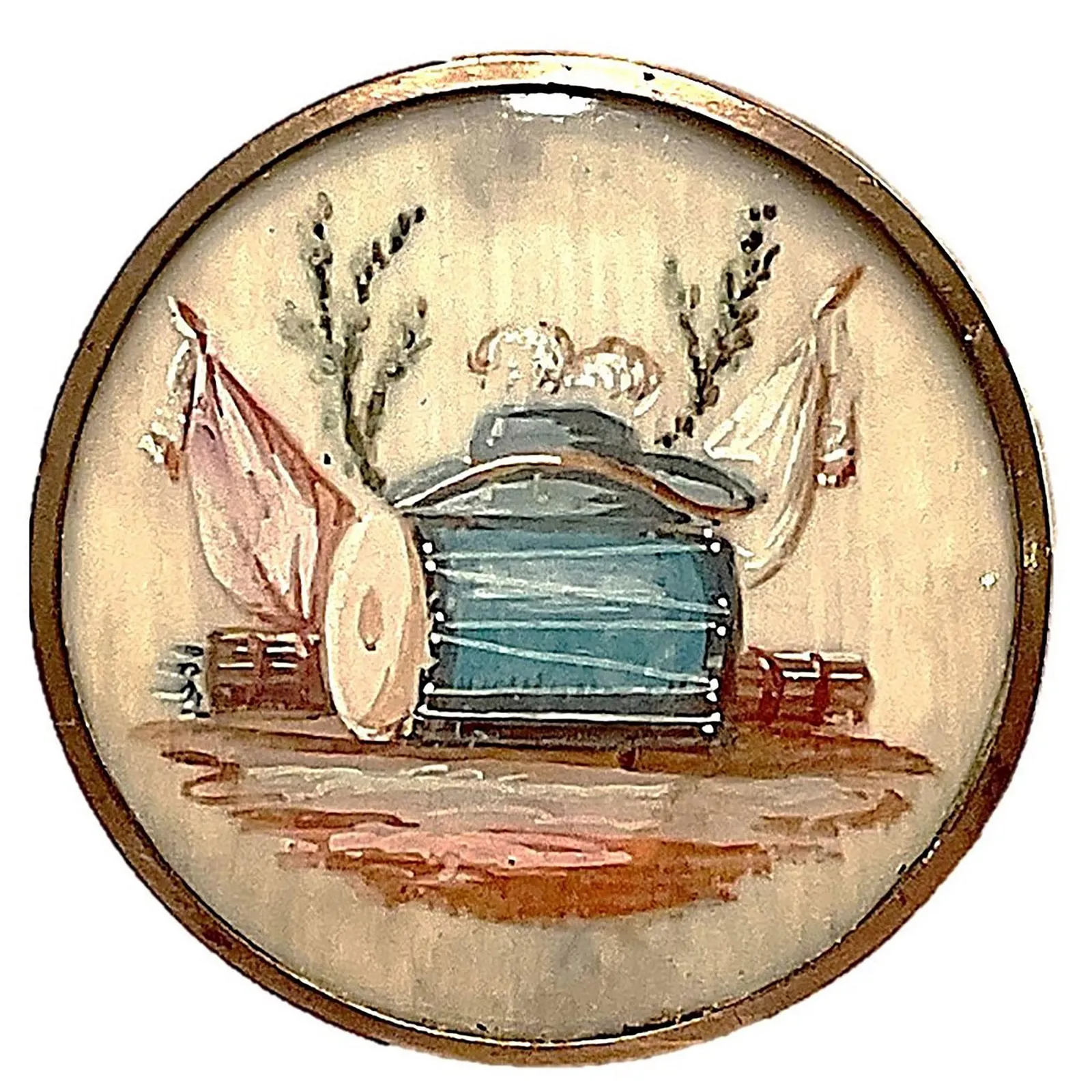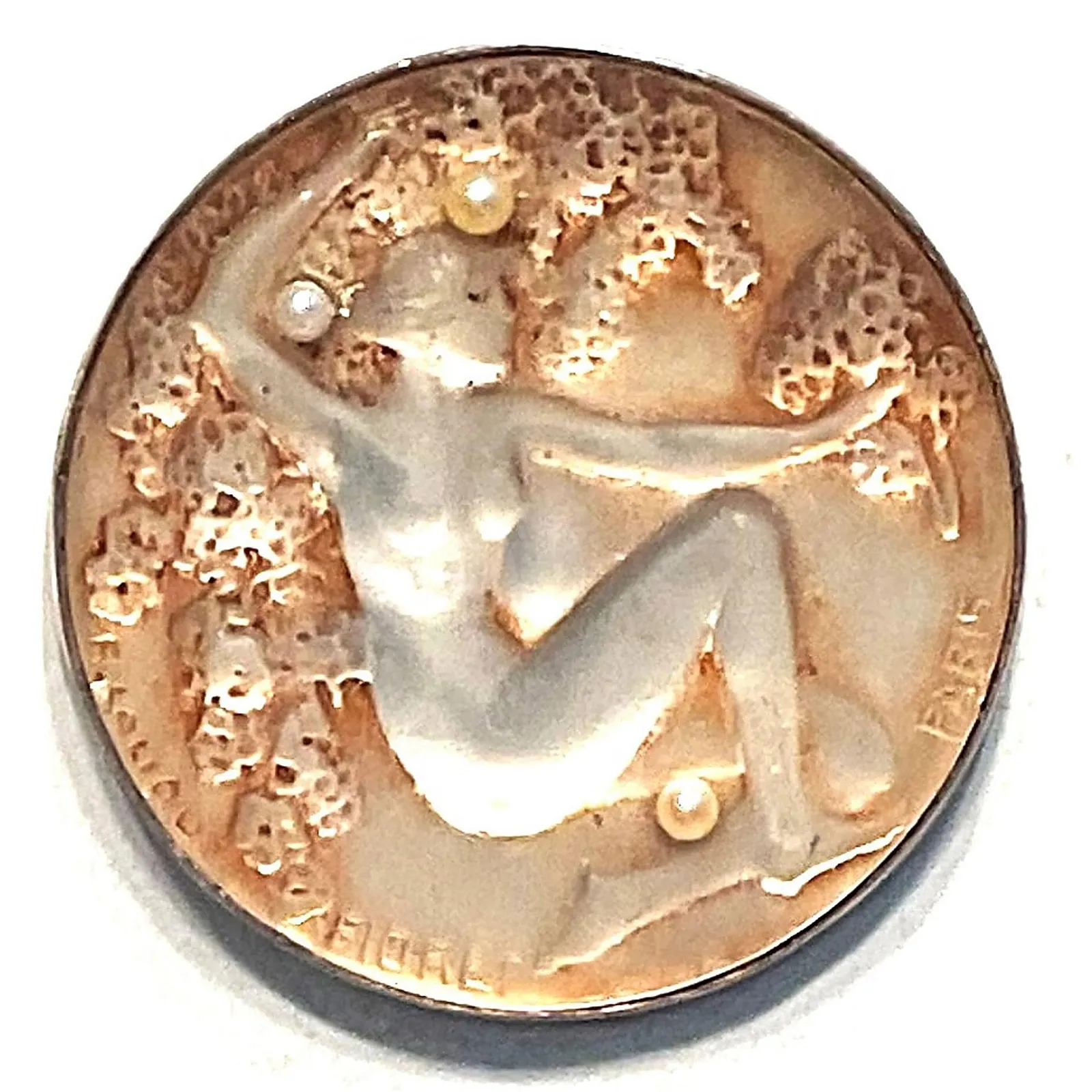Rounding Things Out: Lion and Unicorn’s April 2024 Florida Spring Time Antique Button Auction
Lion and Unicorn of Hollywood, Florida held its signature Florida Spring Time Antique Button Auction on April 10, 2024. This important sale presented 565 lots of 18th to 21st-century buttons of all sorts– including premier single items, curated themed cards, and mixed lot bags. Materials featured included a variety of precious metals and alloys, glass, shell, wood, Bakelite, celluloid, and many others. Here are some sale standouts that caught the eye of the Auction Daily team. All prices noted include the auction house’s buyer’s premium.

The top lot in this sale was #493, an 18th-century engraved Tombac pictorial button. Estimated at USD 1,500 to $2,500, it delivered $6,250. This example measured around 1.5 inches in diameter and was decorated with a charming illustration of a four-wheeled passenger coach pulled by four horses. Three people were visible as passengers. The reverse was plain metal with a black dimensional shank.
Tombac is a brass alloy that also contains copper and zinc. It can be colored with the addition of other metals or materials, including lead or tin. Given its composition, Tombac is relatively pliable and malleable from the design and decoration perspectives. It is easy to model or engrave (like in this case) and has a nice sheen to it. It also does not need polishing, making it a perfect, inexpensive, and low-maintenance material for decorative arts– like buttons.

Distinctive, hand-painted buttons were a popular category in this exciting sale. Lot #472, an 18th-century example with a hat, drum, banners, and greenery under glass, was estimated at $800 to $1,200 and sold for $5,625. This rarity was about 1.5 inches in diameter. Its tiny, very finely rendered scene was painted on natural material and framed within a perfectly proportional copper ring. The reverse was made from gray metal with a matching dimensional shank.
This button was from the collection of Jean Young (1927 – 2022) of San Jose, CA. Young was an award-winning and well-known member of the California State Button Society.

Buttons produced by designers or companies of note were also well represented in this event. Lot #291, an Art Nouveau frosted and etched glass button decorated with a Nymph and three cultured pearls by designer René Lalique (French, 1860 – 1945), was estimated at $2,000 to $3,500 and traded hands at $4,000. It featured a distinctive brownish sepia tint to highlight the front image of the figure and her background. This button was signed R. Lalique, Fioret, and Paris and was set in a sterling silver frame. According to Lion and Unicorn’s experts, “… the button has been found in various colors but this example is the only known version we are aware of with this special tint.”
This rare, early 20th-century glass pictorial button was one of six known button designs produced by Lalique in France. The others were a rose, a fox, a moon, a snake, and an abstract pattern. These were all produced in many jewel-like colors, including blue, pink, purple, and green. The nymph example sold through Lion and Unicorn was signed, which was not always the case with Lalique buttons. Buttons were not a prominent category in the Lalique catalog and were made to enhance other items, or as cufflinks, not as a stand-alone line.

Also on offer was a fine selection of stunning antique Japanese buttons. Lot #515, a handsomely executed 19th-century Shakudo button, was estimated at $800 to $1,200 and realized $1,375. This example was decorated with the portrait of the Chinese General Guan Yu from the Three Kingdoms era (220 to 280 AD) and his horse. Guan Yu is recognized and revered across Asian cultures for his loyalty, righteousness, and bravery. This button was detailed with inlaid gold accents throughout. This museum-quality fastener was from the collection of Shirley Case (1935 – 2020) of Warrenton, Missouri. Case, a member of the National Button Society and a published author, specialized in 18th-century pearl buttons.
Shakudo is a Japanese metal alloy made from mostly copper and small amounts of gold. The word Shakudo is derived from the Japanese words for “red” and “copper.” The first items made from Shakudo materials have been dated from the 12th century onward and include sword fittings, guards, decorative ornaments, handles, and small containers. Because of its gold content, Shakudo can be costly. As such, it is typically used to make smaller-scaled items– like the button highlighted here– or as a decorative element on larger items.

This sale came full circle with historical buttons, buttons manufactured from a spectrum of unusual materials, button collections and cards, and other surprises. Lot #534, a small 19th-century purple radiant outline glory glass button, was estimated at $200 to $400 and made a whopping $1,750. Radiant glass buttons are transparent and derive their hue from the tips of their shanks, where their coloring is centralized and radiates forward and outward. Purple radiants in this form are few and far between on the secondary market; that probably explains its outstanding results in this sale.
For more information on Lion And Unicorn’s Florida Spring Time Antique Button Auction held on April 10, 2024, visit LiveAuctioneers.
Looking for more button auction results? Check out Auction Daily’s coverage of a similar sale from 2022.










